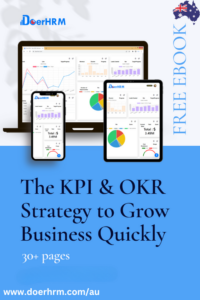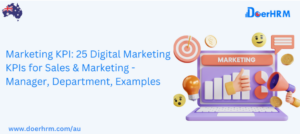The ultimate vanity metric explainer. What are vanity metrics? How do you identify them? And how do you replace them with better KPIs?
It’s easy to criticise vanity metrics, but we’ve all been there.
In this post, I will describe three common problems that lead us to vanity metrics. Then I will share The Vanity Metric Test, a way to review metrics and know if you are veering into vanity metric territory.
There is no dearth of data for your tracking, you get huge numbers of metrics for each of your social media accounts, marketing campaigns, email campaigns, blog, and website. But you would be rattled to know that not everything is worth tracking and few of these easily available metrics can be misleading too.
These metrics can be the Number of followers on Social media, page views, profile visits, number of likes, etc. It’s not that they don’t tell you anything at all, but they don’t help you understand your performance on the business front and do not equip you with decision-making data.
What are Vanity Metrics?
Vanity metrics are the flashy things that look good on paper and can give you short-term happiness but not future decision-making capabilities and insight into your business’s success or failure.
A typical example could be the number of likes on social media. More and more likes are good but do they mean leads, and sales, no right? These numbers do not necessarily correlate to the numbers that really matter like engagement, cost of acquisition, or revenues and profits.
They are superficial and often misleading, and ultimately do not help you improve in any meaningful way. It’s an overwhelming feeling if millions of people follow you on Instagram and seem interested in your product but follow means nothing if they do not translate into conversion or sales.
Humans have a tendency to highlight the positive outcomes of their work and these metrics which rise quickly like the traffic on the page gives them an opportunity to validate their work. But you need to ask questions like did it bring more conversions, more revenue?
Basically, vanity Metrics are good for feeling awesome but bad for action. So instead of wasting your time on such low-hanging fruits, identify the data points which really matter to your business.
Characteristics of Vanity Metrics
Vanity metrics provide a surface-level view of your business or product’s performance but don’t necessarily offer any actionable insights.
These metrics may look good, but they can be misleading and unhelpful when making informed decisions.
There are several common characteristics of vanity metrics, including:
- The metric lacks context and nuance
- It has no substance
- Provides misleading information
- It doesn’t assist in business or product improvement in a meaningful way
- It’s too easy to measure
- Context is critical to any metric. If a metric lacks context, then it has little or no value. What are key metrics is a strategic business decision that can have a recurring impact.
OKR methodology is a goal management platform that allows you to define your objectives with measurable key results. Book a free demo with our team to learn more about how OKR software can help you identify the key metrics to optimise your organisation’s performance!
Let’s look at some Vanity Metrics and how you can avoid them to consider the Actionable Metrics.
Engagement rate instead of followers – Regardless of how many people are following you on social media, not everybody is going to see the content on their feed or engage with it.
Instead, use the in-built insights to check the engagements like comments and shares that give you a better understanding of your audience and try to replicate these high-engagement posts.
Bounce rate and social shared instead of Blog post page views – Blog views are great, it shows your content is good but they do not indicate the source of traffic, or how much time a person spent on that page.
However, the bounce rate gives you important information about your page and how many people left your site after visiting that page. You can work on your call to action or place links to other pages for people to navigate through the site. A declining bounce rate is a good metric to report.
Search engines now consider Facebook shares and tweets as critical criteria in their rankings. Hence tracking social shares can become an integral part of your SEO efforts.
Email click-through rate instead of open rate – Open rate is a reasonable metric but that does not mean the email was read or given any importance. On the other hand, the Click through rate gives you the metric of customers who clicked on your call to action and navigated to your landing page or website or downloaded something. This metric tells you that the campaign is generating leads.
Active users instead of Subscribers – Getting more and more subscribers or more downloads of your apps is a trackable metric but still, they sometimes fail to paint a clear picture. You don’t know if people are actually consuming your product or content unless you check the Active users.
The number of active users gives you the correct picture of people returning to your content or using your product. In Google Analytics, Visitor loyalty and visitor recency are helpful metrics. Additionally, you should also track the content that drew leads that converted to qualified contacts or customers.
Also, shift your focus towards revenue metrics:
Above everything, you need to identify the trail of your revenue. Each time a customer pays, that needs to be tracked. And for that, you need to track the metrics that are close to your revenues and costs.
- Customer Lifetime Value.
- Total Revenue.
- Net Profit.
- Average Order Value.
- Number of Transactions.
- Customer Acquisition Cost.
Acquisition Metrics – It’s very crucial to know where your customers are coming from, Social media referrals? Paid Traffic? Or Organic traffic?
Most of the tools these days let you build a model and track the customers at every stage. You can identify the channels which are bringing you high-quality prospects that convert to customers.
Conversion rates – People tracking the site-wide conversion rate are not getting actionable metrics. It’s very broad and general. Instead, track the per-page conversion rates to know which type of traffic converts at each page because the page might be performing better with one type of traffic than the other but the overall conversion rate of the page may be low.
Focus on Traffic source conversions, Marketing campaign conversions, and primary keyword conversions. Then you will know which pages to test, and which audiences to target. Do the cost-profit analysis for your efforts and take an informed decision for further actions
Following things that are superficial and don’t help your cause is not good for your business. Track things that prepare you to make smart decisions for your business that lead to better ROI or more revenue. So why waste your time on Vanity Metrics when you can track the actionable ones?
With Actionable metrics, you know how you gain or lose revenue or customers and what are the benefits for which people are coming to you. Or why the customers left before completing the purchase or why did they cancel the subscription?
All this gives you an understanding of the behaviour of your customers and builds your business faster.










Excellent tips! Can’t wait to implement these strategies in our HR department